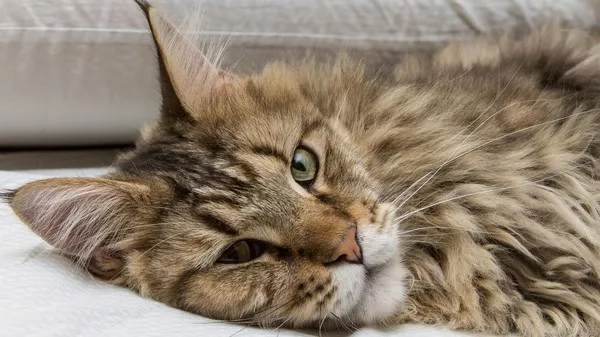Cats, with their enigmatic personalities and unpredictable behaviors, can sometimes leave pet owners puzzled, especially when it comes to biting. While cats may use biting as a form of communication or play, uncontrolled or aggressive biting can be concerning. In this article, we delve into the reasons behind cat biting and provide insights on how to address this behavior, fostering a harmonious relationship between you and your feline companion.
Why Do Cats Bite?
Understanding the motives behind a cat‘s biting behavior is crucial for effective intervention. Cats may bite for various reasons, and decoding these motivations is the first step toward creating a safe and nurturing environment.
1. Playful Biting:
One common reason cats bite is rooted in their play instincts. Kittens, in particular, engage in play biting as a way to explore their world, practice hunting skills, and interact with their littermates. While play biting is normal during kittenhood, it becomes problematic if the behavior persists into adulthood or intensifies to the point of causing harm.
Playful biting is often accompanied by other behaviors such as pouncing, batting, and chasing. Recognizing the signs of playful behavior can help differentiate it from aggressive biting. Playful bites are typically gentler, and the cat may exhibit a loose and relaxed body posture.
Addressing Playful Biting:
Provide appropriate outlets for play, such as interactive toys and scratching posts.
Redirect biting behavior towards toys or soft objects.
Avoid using hands or fingers as play objects to prevent reinforcing biting behavior.
2. Communication:
Cats communicate using a combination of body language, vocalizations, and, at times, biting. Biting can serve as a way for cats to express discomfort, fear, or overstimulation. It may be a form of communication to convey a need for space or a desire to end an interaction.
Understanding the context in which biting occurs is essential for deciphering the cat’s message. Signs of discomfort may include flattened ears, dilated pupils, a flicking tail, or vocalizations such as hissing or growling. Recognizing these cues allows pet owners to respect their cat’s boundaries and create a safe environment.
Addressing Communication-Related Biting:
Give your cat space when they display signs of discomfort.
Gradually acclimate your cat to handling and interactions.
Create a designated retreat space where your cat can seek solitude.
3. Medical Issues:
Cats may resort to biting if they are experiencing pain or discomfort. Dental issues, arthritis, or other medical conditions can manifest as aggressive behavior, as cats may become defensive when touched in sensitive areas. It’s crucial to rule out underlying health concerns when addressing biting behavior.
Observing changes in your cat’s behavior, such as a sudden aversion to being touched or reluctance to play, can be indicators of pain. Consultation with a veterinarian is essential to conduct a thorough examination and identify any potential medical issues contributing to biting behavior.
Addressing Pain-Induced Biting:
Schedule regular veterinary check-ups to monitor your cat’s health.
Be attentive to changes in behavior or signs of discomfort.
Follow your veterinarian’s recommendations for addressing any identified medical issues.
4. Territorial Aggression:
Cats are territorial animals, and they may resort to biting to defend their space or assert dominance. Territorial aggression can arise in multi-cat households or when introducing a new pet into the environment. Cats may bite to establish hierarchy or mark their territory, particularly if they feel their resources, such as food or resting spots, are under threat.
Signs of territorial aggression include hissing, growling, and defensive postures. Understanding the dynamics between cats in a household and providing sufficient resources can help mitigate territorial conflicts.
Addressing Territorial Aggression:
Introduce new cats gradually, allowing them to acclimate to each other’s scents.
Provide separate resources such as food bowls, litter boxes, and resting areas.
Use pheromone diffusers to create a calming environment.
Putting an End to Cat Biting: Practical Strategies
Once the root cause of a cat’s biting behavior is identified, implementing practical strategies can help modify the behavior and promote a positive relationship between the cat and its owner.
Positive Reinforcement:
Positive reinforcement is a powerful tool in cat training. When your cat exhibits non-biting behavior or uses appropriate outlets for play, reward them with treats, praise, or affection. Positive reinforcement helps strengthen the association between good behavior and positive outcomes, encouraging your cat to repeat desirable actions.
Redirecting Biting:
Redirecting biting behavior towards appropriate outlets is crucial. Offer interactive toys, such as feather wands or laser pointers, to engage your cat in play without resorting to biting. Interactive play not only provides an outlet for your cat’s natural instincts but also strengthens the bond between you and your feline companion.
Consistent Training:
Consistency is key when training cats. Establish clear boundaries and consistently reinforce them. If your cat exhibits biting behavior, calmly but firmly redirect them to appropriate activities. Avoid using punishment, as it can create fear and anxiety, potentially exacerbating biting issues.
Consulting a Professional:
If biting behavior persists or if you are unsure of the underlying cause, seeking guidance from a professional, such as a certified cat behaviorist or a veterinarian specializing in behavior, can be invaluable. Professionals can conduct thorough assessments, identify specific triggers, and provide personalized strategies to address the biting behavior.
See Also: Chausie Cat Behavior: Why Your Chausie Cat Bites
Conclusion
Cat biting, while a common behavior, requires careful observation, understanding, and proactive intervention to ensure a harmonious relationship between cats and their owners. Whether rooted in play, communication, medical issues, or territorial instincts, addressing biting behavior involves identifying the underlying cause and implementing practical strategies to modify the behavior positively.
By incorporating positive reinforcement, redirecting biting behavior, maintaining consistent training, and seeking professional guidance when necessary, pet owners can foster a trusting and respectful relationship with their feline companions. Through patience, understanding, and a commitment to their well-being, cat owners can navigate and overcome biting behavior, creating a conducive environment for a happy and healthy cat.

























